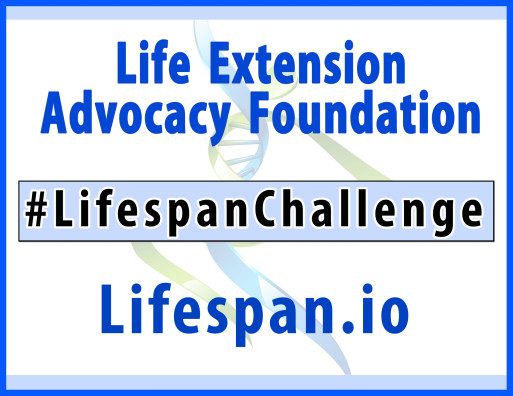Aubrey de Grey at the Launching Longevity Panel, and Announcing Acceptance of the First Paper to be Published on MitoSENS Research – Article by Reason
Today I’ll direct your attention to a couple of videos, thematically linked by the presence of Aubrey de Grey, cofounder of the SENS Research Foundation and tireless advocate for progress towards working rejuvenation therapies. For the first of the videos, de Grey recently took part in a panel discussion involving representatives of the biotechnology industry, the research establishment, and venture capital community, with the topic being the coming development of a new industry that will develop therapies to extend healthy life and turn back aging. That industry has barely started to form its earliest and smallest stage today, as the first lines of rejuvenation research reach the point of commercial viability. There are a few startups and a lot of deep pockets yet to be convinced that this is going somewhere – though the commentary in the panel is encouraged, considering those involved.
The recent Rejuvenation Biotechnology 2016 conference hosted by the SENS Research Foundation was more along the same lines, focused on creating a foundation for the near future industry that will build and provide rejuvenation therapies. The purpose of the conference series is to help smooth the way for these treatments to move rapidly from the laboratory to the clinic, to build the necessary relationships, manage expectations, and pull in the additional support needed to make best possible progress. The conference was livestreamed over the past couple of days, and at one point Aubrey de Grey announced the just-then-and-there acceptance of the first scientific publication for the MitoSENS team at the SENS Research Foundation. They are presently in the lead, at the cutting edge, among the few groups working on the project of copying mitochondrial genes into the cell nucleus to protect them from the damage of aging. Ultimately, copying all thirteen genes should completely remove the contribution of mitochondrial damage to degenerative aging, as mitochondria will no longer become dysfunctional as their local DNA is damaged. They will get the proteins they need from the cell nucleus instead. It is a worthy project, and it is always welcome to see progress on this front.
Launching Longevity: Funding the Fountain of Youth
Can technology make human longevity a reality? As the pace of discovery accelerates, scientists and entrepreneurs are closing in on the Fountain of Youth. Disrupting the aging process by hacking the code of life, promises better health and longer maximum lifespans. With many layers of complexity from science to ethics, there are still skeptics placing odds against human longevity. Venture capitalists are betting on success; putting big money on the table to fund longevity startups. Google/Alphabet and drugmaker AbbVie have invested $1.5 billion on Calico, while Human Longevity Inc. recently raised $220 million from their Series B funding round. Complementing traditional venture investment, VCs like Peter Thiel and Joon Yun have established foundations and prizes to accelerate the end of aging. Why are VCs suddenly investing heavily in longevity startups? Will extended lifespan be a privilege of the wealthy or will the benefits be accessible to all? How long before these well-funded startups bring viable products to market?
Aubrey de Grey Announces Progress in MitoSENS
Ok everybody, before I introduce the next session I just wanted to make a very small, brief, but very welcome announcement. Literally half an hour ago we received some extremely good scientific news. Those of you who have been following SENS research since before the SENS Research Foundation itself even existed will know that, about a decade ago, the very first project, the very first research program that we were able to initiate – with the help of, especially, the initial donation of Peter Thiel – was to make mitochondrial mutations harmless by essentially putting backup copies of the mitochondrial DNA into the nuclear genome, modified in such way of course that the encoded proteins would be colocated back into the mitochondria to do their job. This is an idea that was first put forward more than 30 years ago, but it is an idea that despite quite a bit of initial effort, nobody was able to make work. When I first came across this concept, in fact I’d thought of it myself, it’s a pretty obvious idea really, I came to the conclusion that a lot of the despair and despondency and pessimism about this approach was premature, and that it was worth having another go, and so that was the very first project we decided to fund.
Suffice to say that it has not been quite as easy as I was hoping to make progress in that space, but progress has now been made, step by step, over the past several years, with the help especially of the absolutely amazing team we have at the research center, who work on this, headed by Matthew O’Connor. Amutha Boominathan is the number two on the team, and is absolutely indispensable, I’ve no idea where we’d be without her. So, what’s happened half an hour ago is that for the very first time in the entire history of this project, we have got far enough to have a paper accepted in a very nice journal, Nucleic Acids Research, which reports on our progress in this area. The headline result in this paper is that we are the first team ever to get two of the proteins encoded by genes in the mitochondrial DNA simultaneously functioning in the same cell line, and of course – two is equivalent to infinity for mathematicians, you know that, right? – this is extremely heartening news, and I just wanted to let you all know, thank you.





